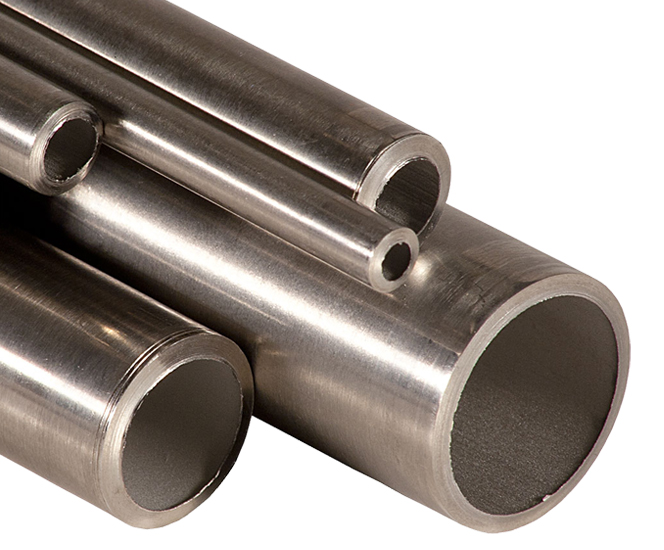In the realm of plumbing, the utilization of Schedule 40 pipes is widespread, especially in water and gas line applications. These pipes are renowned for their mechanical strength, broad temperature range, and robust pressure tolerance. Understanding the intricacies of pressure ratings is paramount for ensuring the optimal performance of Schedule 40 pipes.
1.Diverse Steel Pipe Schedules:
Within the spectrum of steel pipes, there exist 14 different schedules, each designed to meet specific requirements. Schedule 40, being the standard and widely used option, holds a special place in the construction and plumbing industries. The schedule number plays a pivotal role, influencing both wall thickness and pressure ratings, and is standardized by the American Society of Mechanical Engineers (ASME).
2.Dimensions and Specifications:
For clarity and consistency in construction, ASME B36.10 standardizes dimensions for wrought steel pipes, while ASME B36.19 does the same for stainless steel pipes. Detailed tables provide insight into the dimensions and weights of Schedule 40 pipes, aiding in precise installations.

3.Pressure Rating Formula:
The Schedule number is a key factor in determining a pipe's stress-bearing capacity and its ability to withstand pressure. The pressure rating formula, expressed as SCH * P = S, where SCH represents the schedule number, P is the maximum internal pressure, and S is the allowable stress, provides a systematic approach to assessing pressure capabilities.
4.Advanced Pressure Rating Calculation:
Delving into the intricacies of pressure rating calculation involves a modified Barlow’s formula. Rearranged to consider factors such as pipe wall thickness, outside diameter, allowable pressure, stress, longitudinal-joint quality, and wall thickness correction, this advanced approach ensures a thorough understanding of a pipe's pressure-bearing capabilities.
5.Stainless Steel Pressure Rating Dynamics:
Schedule 40 stainless steel pipes introduce additional complexities due to the material's unique properties. Barlow’s formula, when applied to stainless steel, considers the impact of design temperature on allowable stress. The article systematically calculates and tabulates pressure ratings at various temperatures for a comprehensive understanding.
6.Factors Influencing Pressure Ratings:
(1)Material Composition
The material composition of Schedule 40 pipes significantly influences their pressure ratings. Common materials include PVC, CPVC, and steel. Each material has distinct properties that affect how well the pipe can withstand pressure.
(2)Temperature Considerations
Temperature plays a crucial role in determining the pressure a Schedule 40 pipe can handle. Different materials exhibit varying temperature resistance, and exceeding the recommended temperature limits can compromise the pipe's integrity.
(3)Pipe Diameter
The diameter of the pipe is another critical factor affecting pressure ratings. Larger-diameter pipes generally have higher pressure ratings, allowing them to handle more substantial fluid loads.
Mastering the pressure ratings of Schedule 40 pipes is a fundamental step in ensuring the success and safety of your plumbing projects. By delving into the intricacies of steel pipe schedules, dimensions, pressure rating formulas, and advanced calculations, this article equips you with the knowledge needed to make informed decisions and construct reliable plumbing systems that stand the test of time.
1.Diverse Steel Pipe Schedules:
Within the spectrum of steel pipes, there exist 14 different schedules, each designed to meet specific requirements. Schedule 40, being the standard and widely used option, holds a special place in the construction and plumbing industries. The schedule number plays a pivotal role, influencing both wall thickness and pressure ratings, and is standardized by the American Society of Mechanical Engineers (ASME).
2.Dimensions and Specifications:
For clarity and consistency in construction, ASME B36.10 standardizes dimensions for wrought steel pipes, while ASME B36.19 does the same for stainless steel pipes. Detailed tables provide insight into the dimensions and weights of Schedule 40 pipes, aiding in precise installations.

3.Pressure Rating Formula:
The Schedule number is a key factor in determining a pipe's stress-bearing capacity and its ability to withstand pressure. The pressure rating formula, expressed as SCH * P = S, where SCH represents the schedule number, P is the maximum internal pressure, and S is the allowable stress, provides a systematic approach to assessing pressure capabilities.
4.Advanced Pressure Rating Calculation:
Delving into the intricacies of pressure rating calculation involves a modified Barlow’s formula. Rearranged to consider factors such as pipe wall thickness, outside diameter, allowable pressure, stress, longitudinal-joint quality, and wall thickness correction, this advanced approach ensures a thorough understanding of a pipe's pressure-bearing capabilities.
5.Stainless Steel Pressure Rating Dynamics:
Schedule 40 stainless steel pipes introduce additional complexities due to the material's unique properties. Barlow’s formula, when applied to stainless steel, considers the impact of design temperature on allowable stress. The article systematically calculates and tabulates pressure ratings at various temperatures for a comprehensive understanding.
6.Factors Influencing Pressure Ratings:
(1)Material Composition
The material composition of Schedule 40 pipes significantly influences their pressure ratings. Common materials include PVC, CPVC, and steel. Each material has distinct properties that affect how well the pipe can withstand pressure.
(2)Temperature Considerations
Temperature plays a crucial role in determining the pressure a Schedule 40 pipe can handle. Different materials exhibit varying temperature resistance, and exceeding the recommended temperature limits can compromise the pipe's integrity.
(3)Pipe Diameter
The diameter of the pipe is another critical factor affecting pressure ratings. Larger-diameter pipes generally have higher pressure ratings, allowing them to handle more substantial fluid loads.
Mastering the pressure ratings of Schedule 40 pipes is a fundamental step in ensuring the success and safety of your plumbing projects. By delving into the intricacies of steel pipe schedules, dimensions, pressure rating formulas, and advanced calculations, this article equips you with the knowledge needed to make informed decisions and construct reliable plumbing systems that stand the test of time.
Previous:Black steel pipe fittings









